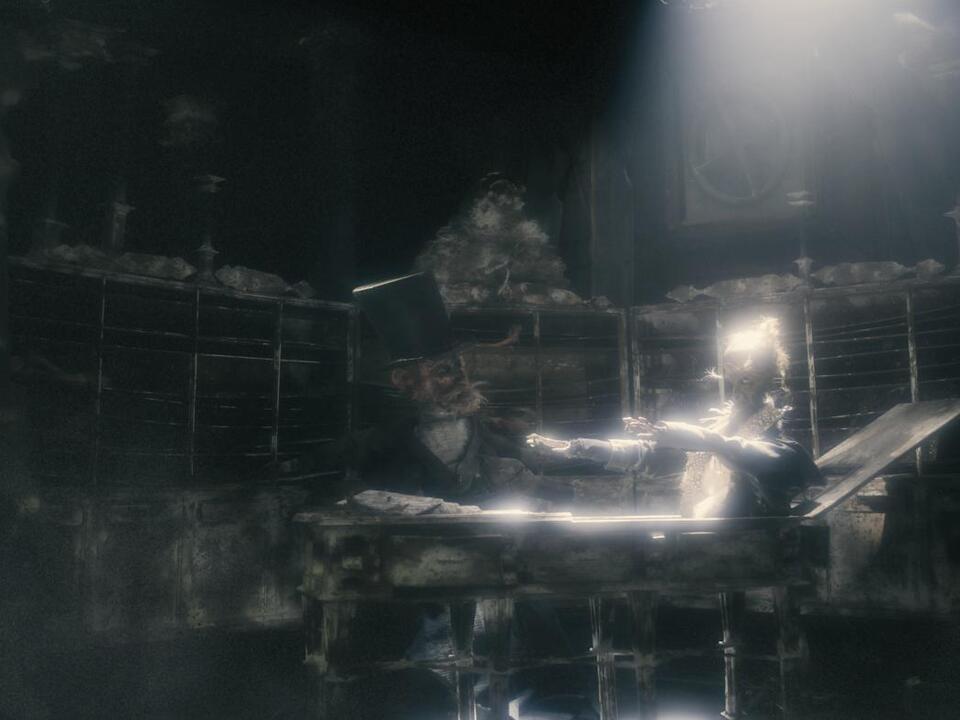Physical Address
304 North Cardinal St.
Dorchester Center, MA 02124
Physical Address
304 North Cardinal St.
Dorchester Center, MA 02124

Time, space, and mortality follow no earthly schedule in the dreamlike world of “Sanatorium Under the Sign of the Hourglass.” This beguiling stop-motion film, crafted by the Quay Brothers, operates under its own temporal laws. The first feature film from the cult animators in nearly 20 years, it lasts just 76 minutes. However, it feels both infinitely long and startlingly brief, resembling a sprawling dream forgotten moments after waking.
This dark and intricate fairytale explores themes of life, death, and the in-between. Inspired by the work of Polish literary giant Bruno Schulz, it boasts a unique storytelling style that focuses more on mood and intuition rather than pure logic. The Quays’ ethereal visuals enhance this free-form narrative.
“Sanatorium” may confound viewers drawn to its vividly distressed gothic fantasy world. The shifting narrative, filled with multiplied characters and merged chronologies, can be disorienting, and death in this world seems anything but final. Those familiar with the Quays’ previous work, like the 1986 short “Street of Crocodiles,” will better appreciate the film’s baroque eccentricities. Debuting in this year’s Venice Days sidebar, it’s set for extensive festival showings, selective arthouse distribution, and a devoted cult following.
The film’s setting, announced by gorgeously antique title cards, is Sanatorium Karpaty at the foothills of the Carpathian Mountains in 1937. This period echoes the year Schulz published the novel sharing the film’s title and Kafkaesque themes. However, the journey begins in a sinister auction house where peculiar items are on offer.
Notable items include the petrified ribs of a sea siren and the warm blood of bees. Central to the plot is a “Maquette for the Sepulchre of a Dead Retina.” This shadow box—animated by a sunlight shaft on the preserved eye of its former owner—lends the film its seven ornate chapter titles, offering a touch of dry humor through grandiose language.
Inside the Maquette unfolds the tale of Jozef (voiced by Andrzej Kłak), a stern young man journeying through a remote stretch of Eastern Europe to the Sanatorium. His elderly father is either dying or dead, contingent on the dimension. The shady overseeing doctor Gotard explains that the facility exists in a time-warp, somewhere between reality and a dream state.
Jozef may find his father alive in one dimension, but only through an agonizing exploration of the labyrinthine corridors. Even this narrative is merely a framework as Jozef’s journey devolves into a psychological maelstrom where memories, nightmares, and reality blur. The film’s structure and imagery loop in on themselves, sustaining an ethereal coherence.
Despite the fragmented narrative, the film elicits a strong emotional response. Intense grief, terror, and desire are felt as Jozef spirals into the void. The claustrophobic beauty of the animation—delicate puppet forms in aged pewter and dusty hues—resembles a forgotten steampunk diorama. Timothy Nelson’s score, credited with “music and soundscapes,” adds to this atmosphere.
Dim lighting and a cobwebbed aesthetic require viewers to concentrate intensely on the detailed visuals and complex plotting. This focus enhances the film’s uncanny quality, making it seem like a curio from an unfamiliar time and place.
Live-action sequences, blurred and distorted, meld seamlessly with the animation, evoking feelings of silent cinema or vintage erotica. These passages add to the surrealness, fitting into the arcane story design. The human faces in these sequences may represent a disturbing imagination for the Sanatorium’s puppet inhabitants, who seem wounded and corporeal despite their wooden and clay construction.
Seductive and bewildering, the Quay Brothers’ latest film provides a journey that leaves our world looking a bit stranger when we finally emerge, blinking, into reality. This trip into their dreamlike imagination is a transformative experience.
Source: various sources